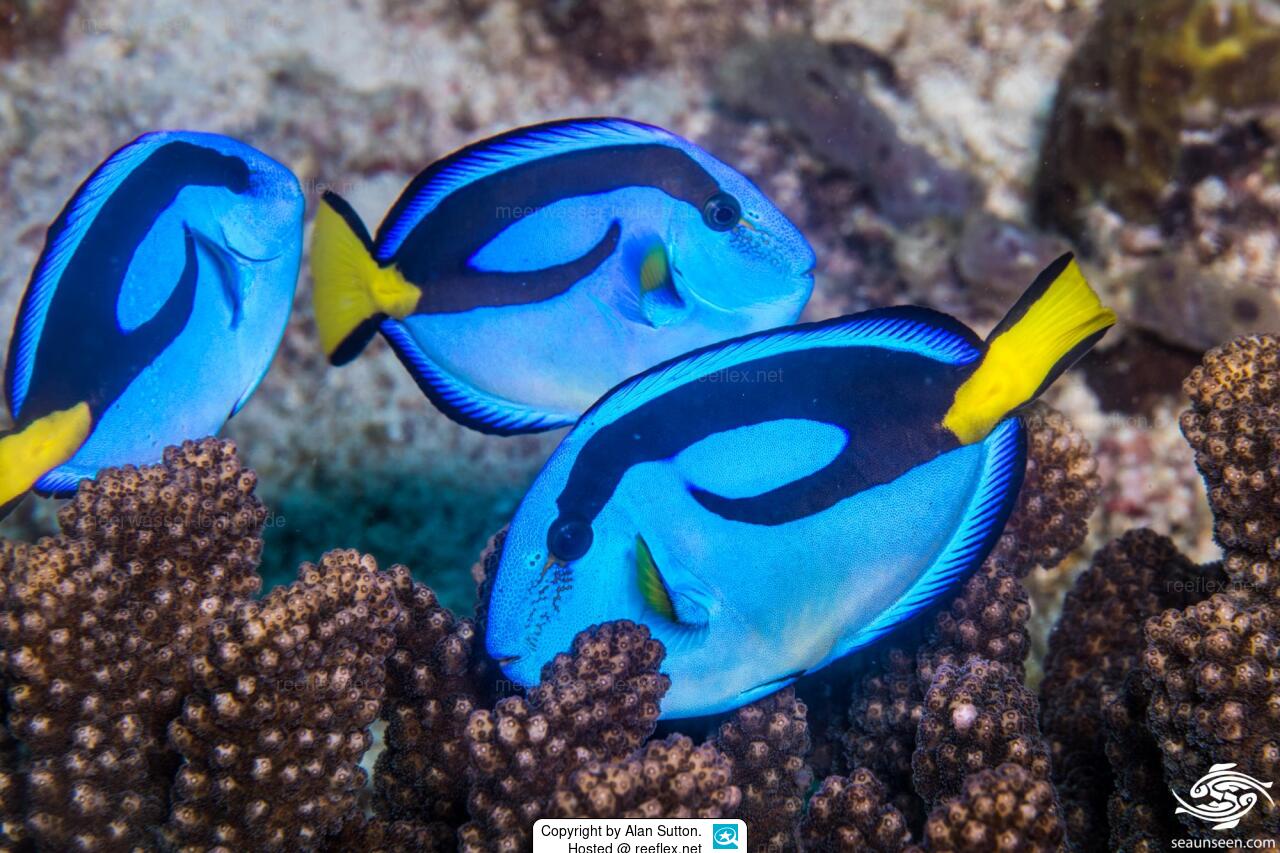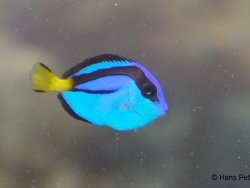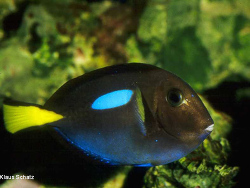Info
Palette surgeonfish
Paracanthurus hepatus is the only species of the genus Paracanthurus that belongs to the family of surgeonfishes. Pallet Doctors prefer to live in outer reefs, as juveniles also in shoals. Adults live in pairs or singly.
Unlike other surgeonfishes, which mostly live on algae growth, the pallet surgeonfish preys on plankton in the open water.
This very beautiful surgeonfish Paracanthurus hepatus is usually quite good to socialize with other animals (invertebrates).
The only factor to consider is food envy.
Pallet surgeonfishes are permanent swimmers and especially permanent eaters. As it is typical for surgeonfishes, they have to eat all the time, i.e. they have to find an always available food supply. They are not frugal algae eaters, but very active plankton hunters, and they selectively choose from a wide range of foods, preferring not only phytoplankton but also crustaceans of all sizes, if they can handle them.
Nevertheless, I think it is worth mentioning that there can always be attacks on invertebrates (example Xenia, Acropora). This is often the case when the animals are bored !
The big disadvantage, in our opinion, is that it very often gets spots when put in, which indicates a certain susceptibility to disease. However, this applies equally to the stress factor. Full fish are usually less stressed than those that are not. It is therefore advisable to use a UV system continuously.
It is better to always use a very small fish, they do not get sick as quickly as large specimens and usually recover faster.
But keep in mind... the fish grows and grows and should at least have a tank with more than 1000 liters for juveniles and more than 2000 liters for adults. Only very small few centimeters pallet doctors can do well in a few 100 liters for a short time.
From this species (mostly !) several animals can be used well at the same time. Here applies as always that the basin must be large enough. If the tank is too small, it can certainly go wrong, especially if you restock.
A good friend of ours, veterinarian Harald Mülder, had to get a pair out of a 1000 liter tank because they simply became too big. Therefore, a much larger tank would be more animal-friendly, ideally beyond the 2,000 liter mark.
Synonymised names:
Eleotris lineata Castelnau, 1875 · unaccepted
Eleotris muralis Valenciennes, 1837 · unaccepted
Eleotris nigrifilis Ogilby, 1897 · unaccepted
Eleotris trabeatus Richardson, 1843 · unaccepted
Eleotroides muralis (Valenciennes, 1837) · unaccepted (misspelling)
Valencienna muralis (Valenciennes, 1837) · unaccepted (misspelling)
Valenciennea aruensis Ogilby, 1910 · unaccepted
The surgeonfishes (Acanthuridae), popular in marine aquaristics, are also called surgeonfishes.
They have horn-like blades in front of the tail root, they use as mainly defensive weapon (defense) against predators, but this sharp weapon is also used in fights among themselves.
Deep cuts in the body of opponents can cause permanent injuries, but often death occurs immediately.
If surgeonfishes are to be kept in pairs in an aquarium, fights between the fishes can be the order of the day, we could observe this several times with the very popular Hawaiian surgeonfish (Zebrasoma flavescens).
The scalpel-like blades can cause deep cuts, this is also true for the careless aquarist who wants to touch or catch the fish with unprotected hands.
Another problem can occur if one wants to catch surgeonfish with a landing net and transfer them after catching, the horn blade can easily get caught in the net.
Caution: Careless handling of the animal can cause deep cuts!







 Alan Sutton, Tansania
Alan Sutton, Tansania
















